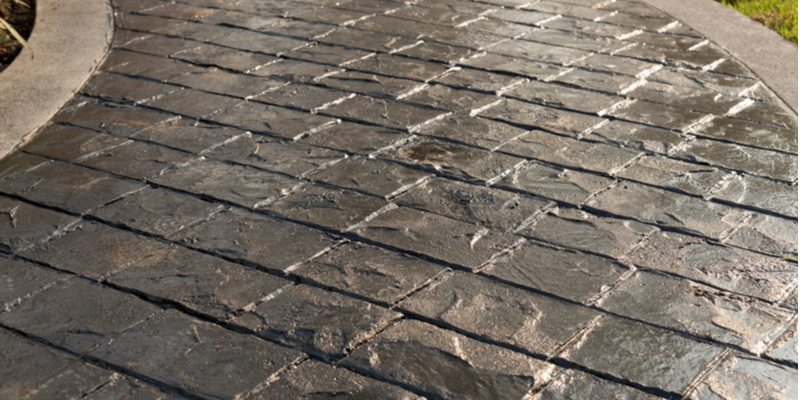Around the globe, concrete is among the most popular and most used building materials. In spite of it’s popularity, concrete is often thought of as an industrial option, not necessarily a beautiful one. The opposite may be true. In fact, concrete is so strong and affordable, it is an excellent choice for your next project. Decorative concrete features a variety of colors, textures, and styles, as well as the ability to mimic the high-end look of tile, stone, and even brick. Let’s explore concrete illustrious history and why decorative concrete is more popular than ever!
The History of Concrete
Concrete is a humble material made of cement and aggregate that is often confused with mortar which is made of cement and sand. Concrete’s history can be traced to Ancient Rome as far back as 150 B.C. The English word “concrete” finds its roots in the Latin “concretus” meaning to bind/grow together. The samples of concrete found in Ancient Rome, like the Colosseum and the Pantheon, showcases its durability, strength, and longevity. Recent discoveries explain Roman concrete’s impressive durability – volcanic ash which when added delivered increased strength and improved resistance to water.
Even more impressive is the decorative concrete the Ancient Romans crafted into their arches, bridges, columns, and buildings creating breathtaking designs likely though one of a kind hand engraving. Though the ages decorative concrete has evolved, and today offers up a variety of techniques including engraving, stamping, staining, and dyeing. Decorative concrete is now experiencing a surge in popularity as a beautiful and functional flooring material.
The Types of Decorative Concrete
Decorative concrete is simply traditional concrete which features coloring, staining, dyeing, as well as unique patterns and finishes. It can be used not only to enhance aesthetics, but also to improve safety though the addition of textured, no -slip finishes. Decorative concrete can be created in a variety of ways, from adding unique ingredients prior to pouring, or laying a decorative layer on top of cured traditional concrete.
Stamped concrete is among the most popular application, and can be crafted to mimic stone, cobblestone, brick, wood, slate, shells, and more. Because of the durability and cost effectiveness of stamped concrete, you can showcase your creativity and style with a premium, personalized look. Stamped concrete is created using molds pressed into the concrete in its plastic state while color can be added in a number of ways. It can be used inside or out, for numerous applications from flooring to patios, countertops to driveways.
Dyed concrete today is more effective than earlier methods. The alcohol-based dyes of the past faded quickly in the sun, so the latest methods feature better solutions complete with a UV inhibiting agent which delivers fade resistance.
Stamped concrete overlays deliver a variety of textures including brick and natural stone, using rubber imprinting tools pressed into the freshly poured concrete. The concrete dries with the imprints in place and is removed via the colorful release agents added to the mix. In similar fashion, polymer cement overlays feature a polymer resin added to concrete mixture to add color and texture, plus additional strength and durability.
Polished concrete is created with mechanical grinders and diamond pads to give the concrete a shiny, glass-like finish. Concrete dyes and acid stains can be added for additional shine and color. Concrete can also be engraved with shapes, patterns, grout and more using specialty tools for a completely custom look and style.
Custom Concrete by Turnbull Masonry
In Toronto, Turnbull Masonry offers high quality custom concrete work for your residential and commercial projects. If you are ready to get your decorative concrete product started, call Turnbull Masonry today!

